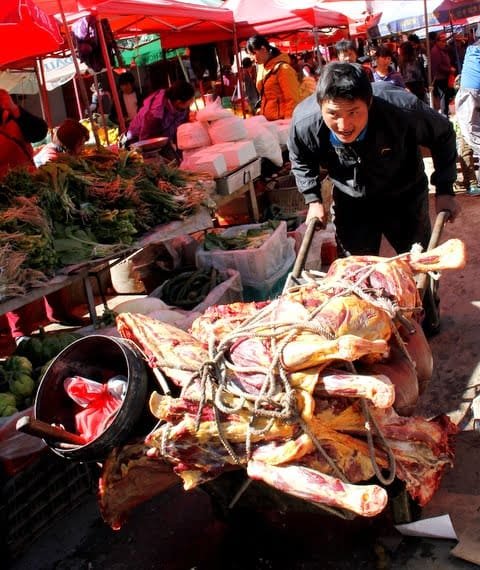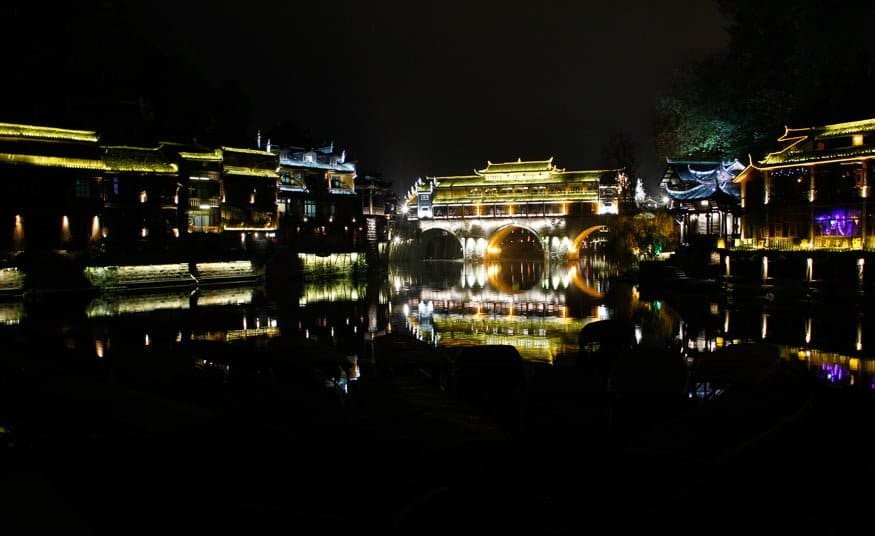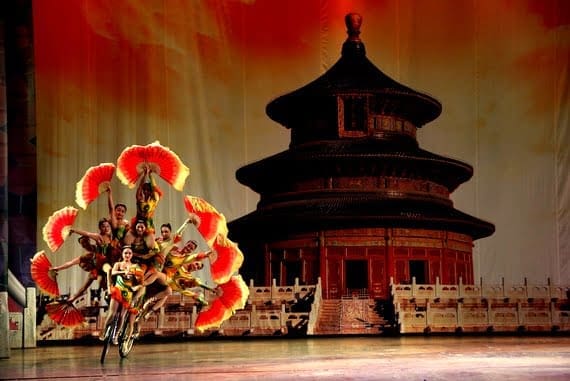
As the capital city of the Earth’s most populous country and one of its oldest cultures, Beijing is the center of China’s universe. Cloaked in mystery and ancient traditions, every layer you peel back reveals an ever more complex layer below it. As the last city we could squeeze onto our 30-day visa, Beijing would turn out to be the perfect mixture of culture, entertainment, last-minute shopping before pricey Japan, and a grand finale….The Great Wall of China.
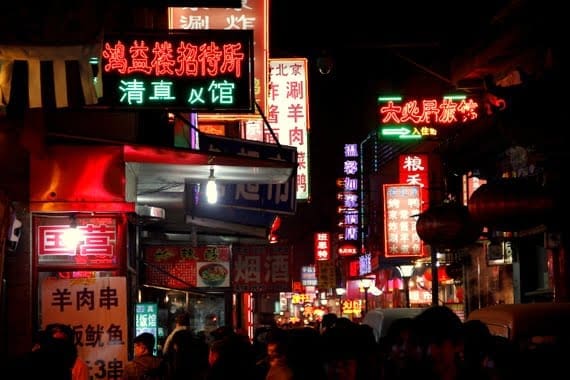
While Shianghai and Beijing have infinitely more English than say towns like Emeishan or Benzilan you still occasionally run into the “Great Wall of Chinese Characters,” as seen above on the street we chose for dinner. Now adept at seeing beyond the GWCC, we found a dumpling maker rolling these divine little pork and veggie presents and sat for a dozen and a pot of tea.
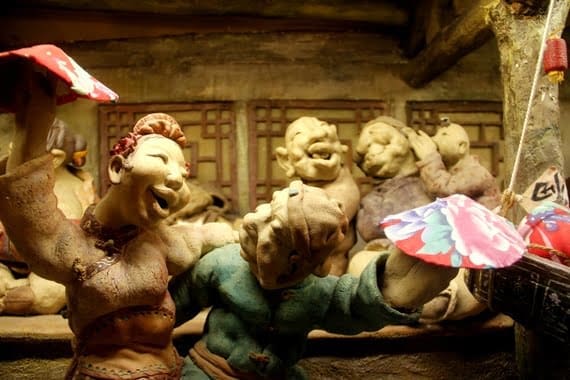
After dinner we meandered around the shopping streets of Qianmen street, enjoying the hustle and bustle, glowing lanterns, and array of smells but what struck us most was this display of hilarious clay-molded village scenes (have a chuckle at the rest in the slide-show). Scene after scene it was a playful social commentary—complete with drunken townfolk, hanky panky couples, goofy military officers…a lighthearted side of China we didn’t often see out in the open.
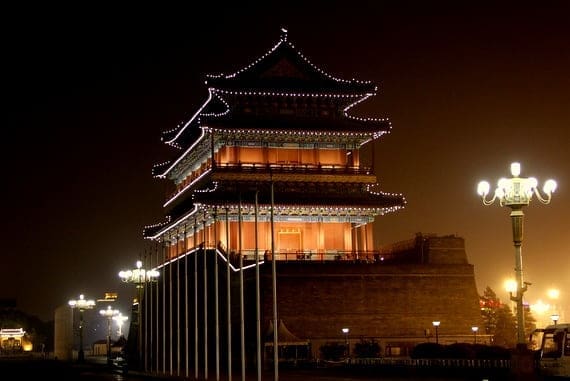
On the way back to our hotel we thought we’d stroll through Tiananmen Square…not so much. This site of the famous student rebellion and massacre in 1989 is still on lock down from every direction. While you can sense the winds of change blowing slowly across this land, China still uses its iron fist to stifle signs of democracy and free speech. (Technology tip: Before your flight into the mainland, download and install a VPN for unfettered internet access throughout the country.) Though the atrocities that occurred there are still absent from Chinese school books and blocked on websites that so much as mentions, it remains a powerful symbol of defiance.
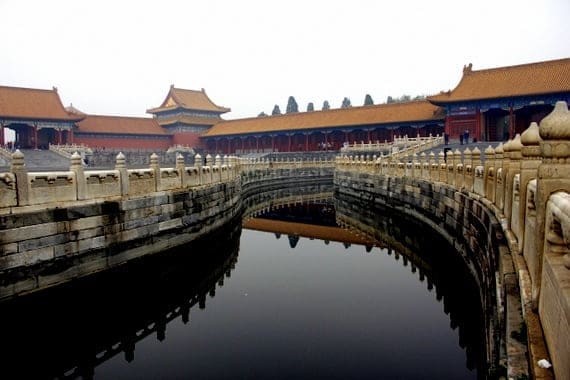
The following day, the forecast was looking grim (60% chance of showers and 100% chance of pollution) but with limited time we pressed on not to miss China’s most revered monuments. Our first stop was the Forbidden City, home to 24 Emperors over 500 years and a venerable maze of 980 buildings. This beautiful canal ran through the heart of the compound.

Every royal building in Beijing has a certain rank which is denoted by the number of animals along its outer eaves. With ten animals in tow, the Hall of Supreme Harmony was known to be the most important building in the entire Chinese empire.
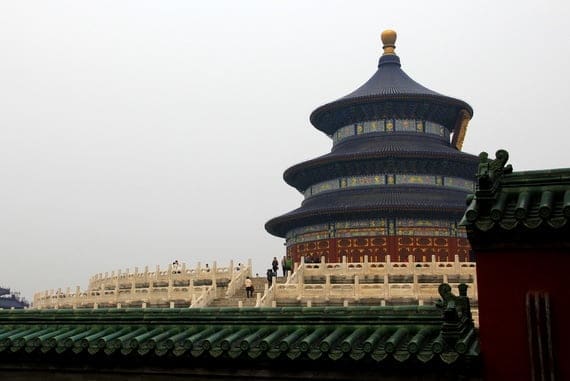
Next stop…the center of the world! Tiantan, known to westerners as “The Temple of Heaven,” was constructed in the mid-15th century by Emperor Yongle as the meeting place between Heaven and Earth. For centuries the sitting Emperor made an annual pilgrimage to this temple to fast for three days and pray for a prosperous harvest season. In the slideshow you can see us getting “centered” on the round slab where the Throne of Heaven once stood.
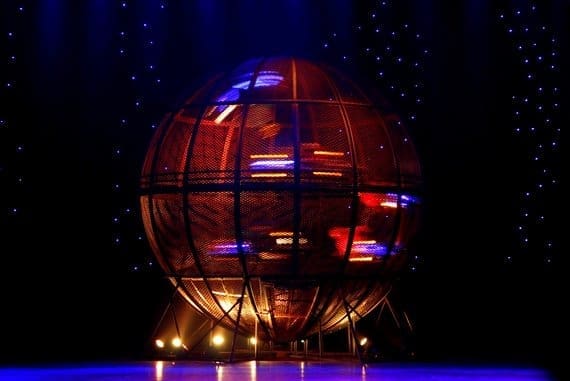
The next day the weather had us beat with a freak snow storm that kept us inside the better part of the day. We attempted to go antiquing through the sleet but quit early to catch a Chinese acrobatics show. While this is quite a touristy thing to do, the Chinese basically invented acrobatics so we knew the physical feats would be the best-of-the-best. Case in point, the “Motorcycle Ball Of Death.” It was impressive with two motos whizzing upside down and around each other, but then came another, and another, until there were seven crisscrossing in every direction at 50km an hour. We practically bit our nails to the bone watching this stunt of certain death but hey, no one says safety standards make a good show.
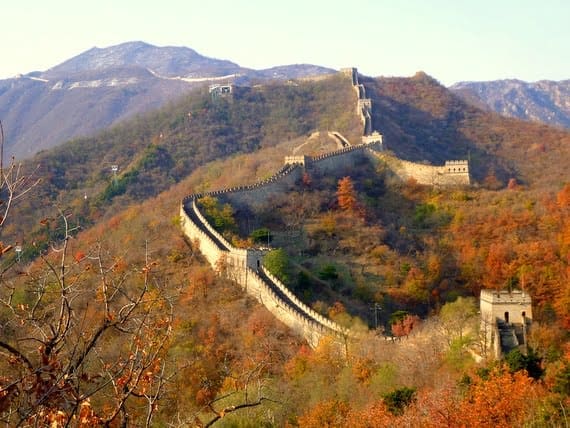
On our last full day in Beijing we took the public transit to the most untouristy section of the Great Wall we could get to: Mutianyu. With something as well-known and documented as the Great Wall, there is always the risk of a let-down but to see these hand-laid bricks climb up mountains, down valleys and extend off into the horizon is more impressive than we could have ever imagined. Add a fresh layer of snow from the night before and the last of fall’s red foliage and it was nothing short of magical for our Great Wall hike.
Three kilometers of this 14th-century chunk of wall have been meticulously reconstructed using similar materials and craftsmanship as the original. However the real beauty of Mutianyu is that at either end of the reconstructed portion, there aren’t any guards…just security cameras. We knew this could get us in some trouble–a ticket or perhaps life in jail–but we couldn’t resist the call of the crumbling towers and creeping vines. Check out this video from our sneaky trek to one of the original 25,000 battle towers.
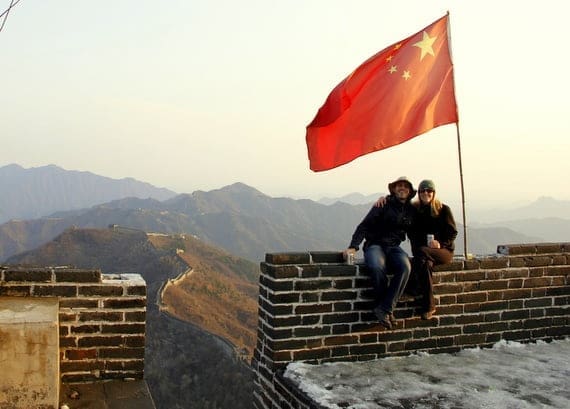
After we picnicked in the far reaches of the southern section, we turned around and went as far as we could in the other direction. Keeping with our risky theme, we hiked until sunset, had a few Tsingtaos at the edge of the “official walkable wall” then with our liquid courage, continued past the cameras again and up a few more tiers. We figured at this point they had our mug shots from the first bout of trespassing so what would a second offense and hiking after close really matter now? Gulp. Good news is the authorities weren’t waiting for us at the bottom and seeing the tourist-free wall basking in the twilight was the most epic ending to one incredible month in China.
